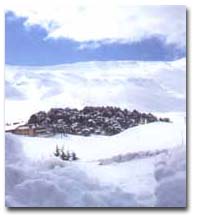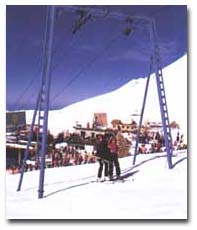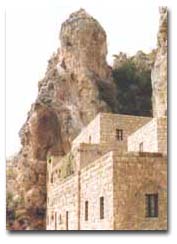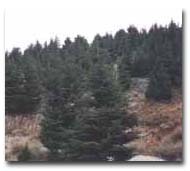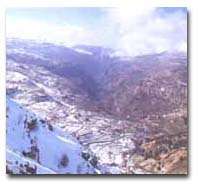
Qadisha Gorge
|
A more direct way to The Cedars from Cheka south of Tripoli to Bsharre. Two roads lead from Bsharre village to the Cedars, about seven Kilometers up the mountain. The older road, known for its hairpin curves, leads past the entrance path of the Qadisha grotto. The new road, with more gentle engineering is kept clear in winter for pain free ascent. Whichever way you take, the vistas are beautiful, especially when fog rises from the valley. |
